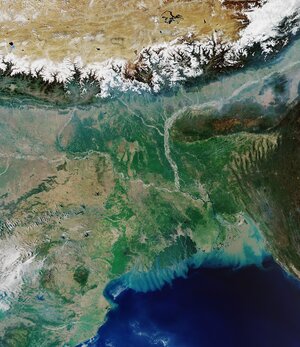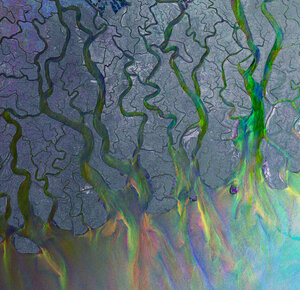Accept all cookies Accept only essential cookies See our Cookie Notice

About ESA
The European Space Agency (ESA) is Europe’s gateway to space. Its mission is to shape the development of Europe’s space capability and ensure that investment in space continues to deliver benefits to the citizens of Europe and the world.
Highlights
ESA - United space in Europe
This is ESA ESA facts Member States & Cooperating States Funding Director General Top management For Member State Delegations European vision European Space Policy ESA & EU Space Councils Responsibility & Sustainability Annual Report Calendar of meetings Corporate newsEstablishments & sites
ESA Headquarters ESA ESTEC ESA ESOC ESA ESRIN ESA EAC ESA ESAC Europe's Spaceport ESA ESEC ESA ECSAT Brussels Office Washington OfficeWorking with ESA
Business with ESA ESA Commercialisation Gateway Law at ESA Careers Cyber resilience at ESA IT at ESA Newsroom Partnerships Merchandising Licence Education Open Space Innovation Platform Integrity and Reporting Administrative Tribunal Health and SafetyMore about ESA
History ESA Historical Archives Exhibitions Publications Art & Culture ESA Merchandise Kids Diversity ESA Brand Centre ESA ChampionsLatest
Space in Member States
Find out more about space activities in our 23 Member States, and understand how ESA works together with their national agencies, institutions and organisations.
Science & Exploration
Exploring our Solar System and unlocking the secrets of the Universe
Go to topicAstronauts
Missions
Juice Euclid Webb Solar Orbiter BepiColombo Gaia ExoMars Cheops Exoplanet missions More missionsActivities
International Space Station Orion service module Gateway Concordia Caves & Pangaea BenefitsLatest
Space Safety
Protecting life and infrastructure on Earth and in orbit
Go to topicAsteroids
Asteroids and Planetary Defence Asteroid danger explained Flyeye telescope: asteroid detection Hera mission: asteroid deflection Near-Earth Object Coordination CentreSpace junk
About space debris Space debris by the numbers Space Environment Report In space refuelling, refurbishing and removingSafety from space
Clean Space ecodesign Zero Debris Technologies Space for Earth Supporting Sustainable DevelopmentLatest
Applications
Using space to benefit citizens and meet future challenges on Earth
Go to topicObserving the Earth
Observing the Earth Future EO Copernicus Meteorology Space for our climate Satellite missionsCommercialisation
ESA Commercialisation Gateway Open Space Innovation Platform Business Incubation ESA Space SolutionsLatest
Enabling & Support
Making space accessible and developing the technologies for the future
Go to topicBuilding missions
Space Engineering and Technology Test centre Laboratories Concurrent Design Facility Preparing for the future Shaping the Future Discovery and Preparation Advanced Concepts TeamSpace transportation
Space Transportation Ariane Vega Space Rider Future space transportation Boost! Europe's Spaceport Launches from Europe's Spaceport from 2012Latest

Sundarbans web
Thank you for liking
You have already liked this page, you can only like it once!
The Sentinel-2A satellite takes us over the very eastern part of the Sundarbans in Bangladesh, in this natural-colour image.
A region comprising southern Bangladesh and a small part of the Indian state of west Bengal, the whole area of the Sundarbans incorporates some 10 000 sq km, consisting of mangrove and swamp forests.
The region of the Sundarbans appears in dark shades of green in this image, while the adjacent areas in brighter colours are densely populated and dominated by agriculture.
Sundarbans is the world’s largest single chunk of tidal halophytic mangrove forest. Generally, fresh water is required for plants, but these mangrove forests can also thrive in saline water.
This area lies on the Bay of Bengal, the world’s largest bay. A number of large rivers – including the Ganges, its tributaries and various other rivers, all flow into its waters, forming the Ganges–Brahmaputra Delta.
The erosional forces of the sea and wind along the coast continuously mould the landscape, together with the huge amounts of silt and other sediments, deposited in the countless estuaries, visible in the water. Distinct throughout the image, the network of these estuaries, tidal rivers and creeks, criss-crossed by numerous channels, enclose flat, densely forested, marshy islands and agricultural plots.
Most of the delta is composed of alluvial soils made up of fine sediment that settles to the bottom as river currents slow in the estuary. The soil has large amounts of minerals and nutrients, ideal for agriculture.
These fertile floodplains host jute, tea and rice – the major crops grown in the Ganges Delta, visible as brighter patches on the land areas in the right part of the image. Fishing is also an important activity, and a major source of food for many of the inhabitants of the various towns, which we can see along the brighter areas.
The Sundarbans National Park, established in 1984 and a designated UNESCO World Heritage Site, is a core region within the Bengal Tiger Reserve. The almost extinct Bengal tiger is the national animal of Bangladesh and is considered the second largest tiger in the world.
This image – also featured on the Earth from Space video programme – was captured by Sentinel-2A on 18 March 2016.
-
CREDIT
Contains modified Copernicus Sentinel data (2016), processed by ESA -
LICENCE
CC BY-SA 3.0 IGO or ESA Standard Licence
(content can be used under either licence)

Ganges Delta

Earth from Space: Sundarbans web

Earth from Space: Kolkata, India

Sierra Leone River Estuary















 Germany
Germany
 Austria
Austria
 Belgium
Belgium
 Denmark
Denmark
 Spain
Spain
 Estonia
Estonia
 Finland
Finland
 France
France
 Greece
Greece
 Hungary
Hungary
 Ireland
Ireland
 Italy
Italy
 Luxembourg
Luxembourg
 Norway
Norway
 The Netherlands
The Netherlands
 Poland
Poland
 Portugal
Portugal
 Czechia
Czechia
 Romania
Romania
 United Kingdom
United Kingdom
 Slovenia
Slovenia
 Sweden
Sweden
 Switzerland
Switzerland
























